Tamron SP 70-300 mm f/4-5.6 Di VC USD
3. Build quality and image stabilization
The photo below show the Tamron 70–300 mm VC positioned between two Canons: the EF 70–300 mm f/4.0–5.6 IS USM and the EF 70–200 mm f/2.8L USM.
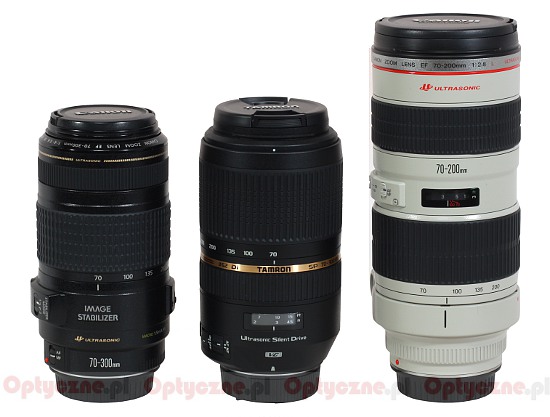 |
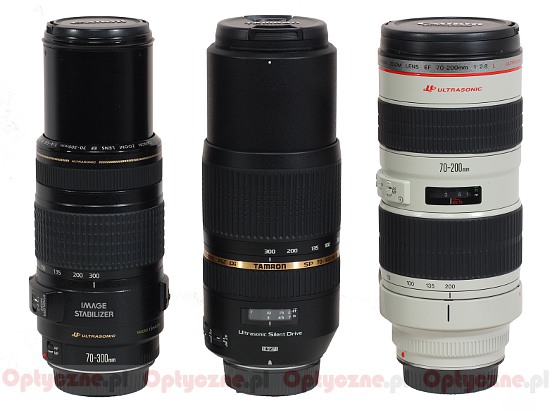 |
Please Support UsIf you enjoy our reviews and articles, and you want us to continue our work please, support our website by donating through PayPal. The funds are going to be used for paying our editorial team, renting servers, and equipping our testing studio; only that way we will be able to continue providing you interesting content for free. |
- - - - - - - - - - - - - - - - - - - - - - - - - - - - - - - - - - - - - - - - - - - - - - - -
Despite the fact that this lens was produced in China, it makes an impression of a very solid, even huge device. If you have used any 70-300 mm class instrument you will get this impression for sure. It starts with a metal bayonet mount which hides a rear element of the lens, 23 mm in diameter. The element is hidden inside the barrel about 1 cm deep when the focal length is set at 70 mm and almost 5 cm deep when we pass to 300 mm focal length.
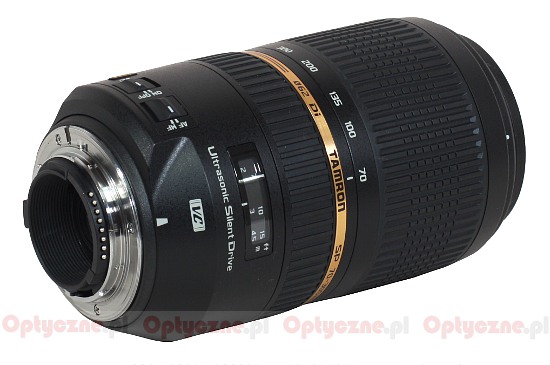 |
When we look at the barrel we will find a „VC” inscription which means that an optical image stabilization system has been implemented here. On the left (looking from the top) there are two switches. The first one allows us to choose the right focus mode (AF/MF) and the second one switches the stabilization on and off (VC ON/OFF). We can’t choose any mode of stabilization by the way, although it is possible in the case of some rival lenses.
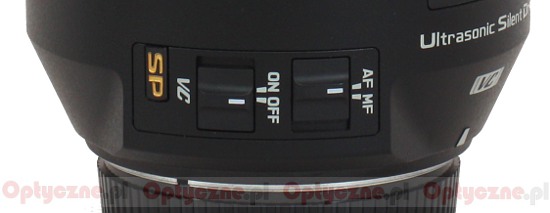 |
A bit above the „VC” inscription we find another one: „Ultrasonic Silent Drive”. It informs us that the lens is equipped with an ultrasonic autofocus motor. The 70-300 mm model is the first device of this producer in which such a motor has been used. More about its work will be said in chapter 10.
Above the „Ultrasonic Silent Drive” notice you can see a legible distance scale expressed in feet and meters and put behind a window. Immediately over it starts a manual focus ring. It is almost 2 cm wide, ribbed and padded with rubber which is very nice to the touch. The ring moves efficiently and it is slightly damped; it allows you to set parameters precisely and, what’s important, it works in both the MF and AF mode. Running through the whole scale takes a 180-degree turn enabling relatively precise settings.
Further on, you can find a golden stripe with the name and the parameters of the lens and right behind it - a zoom ring almost 6 cm wide. Its major part is occupied by rubberized ribs so you can move it efficiently and with confidence. It turns smoothly and is well-damped in the whole focal lengths range. It would be difficult to complain about anything here.
When you zoom the lens, the set of front elements is extended on a homogenous inner tube made of plastics. The dimensions of the lens increase by about 5 cm then. The front element is 51 mm in diameter and it is surrounded by a non-rotating filter thread, 62 mm in diameter.
When it comes to the inner construction we deal here with 17 elements positioned in 12 groups. The producer used one low-dispersion LD element and one made of extra low dispersion glass (XLD). Inside, there is also an aperture with nine diaphragm blades which, depending on the focal length, can be closed to f/32-f/45.
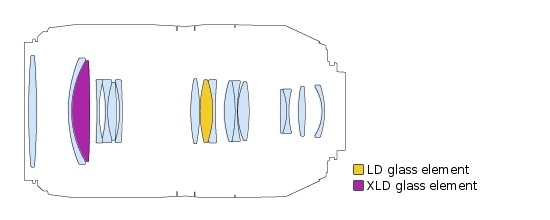 |
The buyer gets a lens hood and both caps included in box.
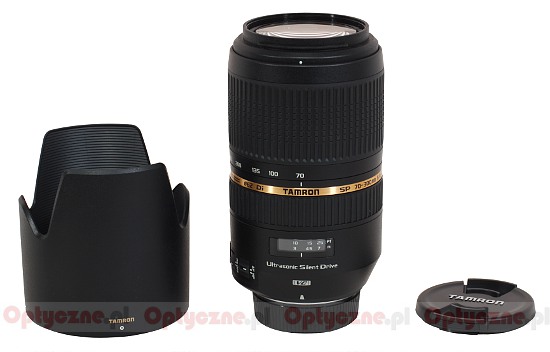 |
Stabilization
You will have problems with finding an explicit declaration concerning the efficiency of the stabilization module, used in the tested lens, no matter whether you visit Polish or Japanese Tamron website. Of course we decided to check its performance on our own, taking several dozen photos at every exposure time ranging from 1/400 to 1/10 of a second with the stabilization switched on and off. Then we determined the percentage of fuzzy photos at every exposure time. It is presented as the exposure time function graph (expressed in EV and 0 EV is the equivalent of 1/320 of a second) below.
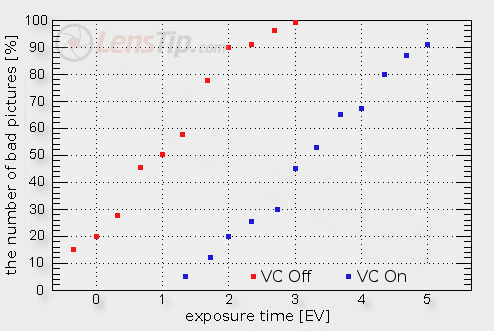
As you see, the maximum distance between both curves reaches 2.5-2.7 EV and we estimate the efficiency of the tested lens’s stabilization module to be as good as that. The result is near average or a tad above it – not giving you any reason for being speechless with delight but also being nothing to carp about.






